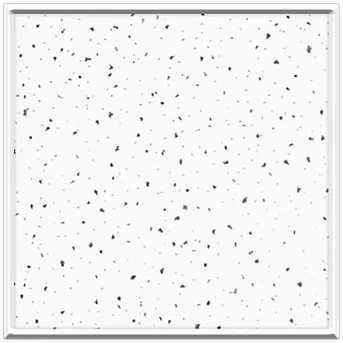Nov . 05, 2024 00:31 Back to list
t bar grid system
Understanding the T-Bar Grid System A Comprehensive Overview
The T-Bar grid system is a widely utilized method in architectural design and construction, especially in the realm of suspended ceilings and interior frameworks. This system's primary function is to provide structural support for ceiling tiles while also facilitating easy access to plumbing, electrical wiring, and other infrastructure located above the ceiling line. The T-Bar grid system is characterized by its distinctive T shape, which interlocks and creates a robust framework for ceiling panels.
Components of the T-Bar Grid System
At its core, the T-Bar grid system consists of several key components main runners, cross tees, and ceiling tiles. The main runners are the long, horizontal bars that span the length of the room, typically installed first. These runners are made from durable materials, often galvanized steel or aluminum, and are designed to support significant weight. Cross tees are perpendicular bars that connect to the main runners, forming the grid pattern that will eventually hold the ceiling tiles. The tiles themselves can be made from various materials, including mineral fiber, acoustic panels, or even decorative options, allowing for versatility in design and function.
Installation Process
The installation of a T-Bar grid system is a straightforward yet meticulous process. First, a level line is marked around the perimeter of the room to establish the desired height of the ceiling. Once the line is set, the main runners are attached to wall brackets or the existing structures on this line. Cross tees are then inserted into the main runners at regular intervals, ensuring that the grid maintains even spacing. Finally, the ceiling tiles are dropped into the grid, completing the installation. This systematic process not only ensures aesthetic appeal but also allows for simple access points for maintenance and repairs.
Advantages of Using a T-Bar Grid System
t bar grid system

One of the primary advantages of the T-Bar grid system is its flexibility. It can easily be adapted to various ceiling heights and room configurations. Whether a project calls for a high ceiling in an auditorium or a lower ceiling in an office space, the T-Bar system accommodates such variations effortlessly. Additionally, the grid allows for numerous design possibilities regarding tile aesthetics and finishes, enabling architects and designers to achieve their desired visual effect.
Another significant benefit is the ease of access it provides. The T-Bar grid allows for the seamless removal and replacement of ceiling tiles, which is crucial for maintenance tasks involving utilities hidden above the ceiling. Electricians, plumbers, and HVAC technicians can efficiently access these spaces without major disruptions, ultimately reducing downtime and labor costs.
Acoustic Benefits
Acoustic performance is another critical consideration for many commercial and residential projects. The T-Bar grid system can be paired with acoustic tiles to enhance sound absorption within a space. This property is especially important in environments such as schools, restaurants, and auditoriums, where noise control directly impacts comfort and functionality. By selecting the appropriate tile materials, designers can tailor the acoustic properties of a room to meet specific needs.
Conclusion
In summary, the T-Bar grid system stands out as a practical and versatile solution for modern architectural needs. Its structural integrity, ease of installation, and maintenance accessibility make it a preferred choice among architects and builders alike. With the added advantages of aesthetic customization and acoustic performance, the T-Bar grid system continues to be an essential component in constructing functional, efficient, and visually appealing spaces. As trends in design and construction evolve, the T-Bar grid system will undoubtedly remain relevant, providing innovative solutions for various architectural challenges.
-
Quality Ceiling Trap Doors & Access Panels | Easy & Secure AccessNewsAug.30,2025
-
Durable Ceiling T Grid Systems | Easy InstallationNewsAug.29,2025
-
PVC Gypsum Ceiling: Durable, Laminated Tiles for Modern SpacesNewsAug.28,2025
-
Pvc Gypsum Ceiling Is DurableNewsAug.21,2025
-
Mineral Fiber Board Is DurableNewsAug.21,2025
-
Ceiling Tile Clip Reusable DesignNewsAug.21,2025







